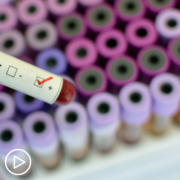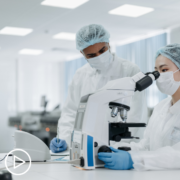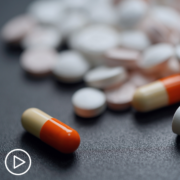What AML Treatment Options Are Available for MRD-Positive Patients?
What AML Treatment Options Are Available for MRD-Positive Patients? from Patient Empowerment Network on Vimeo.
For acute myeloid leukemia (AML) patients who are MRD-positive, what treatment options are available? Dr. Catherine Lai from Penn Medicine discusses MRD-positive concerns. Learn about recent guideline updates for MRD-positive and genetically adverse patients and key questions to ask your care provider.
[ACT]IVATION TIP from Dr. Lai: “For genetically adverse risk, it would be to have a conversation about whether or not you should be going to transplant. And for MRD-positive patients, I would say is to ask about how frequently my testing should be done to monitor for MRD, MRD-positive disease.“
Download Resource Guide en español
Related Resources:

|

|

|
Transcript:
Art:
Okay, Dr. Lai, what treatment strategies are available for genetically adverse risk patients, as well as measurable residual disease or MRD-positive AML patients?
Dr. Catherine Lai:
Yeah, so I’ll take those two separately. So for the genetically adverse patients, and so just also as an update in 2020, in the summer of 2022, both the World Health Organization and the European Leukemia Network, they both updated their guidelines. So it’s called WHO 2022 and ELN 2022 in terms of how we help prognostic and risk-stratify our patients.
And so for the ELN 2022, there are a handful of additional mutations that do put patients at adverse risk, and so it would be good just to know to bring up with your physician, which in risk category am I in?
And so in general, for the adverse risk patients, the long-term goal is bone marrow transplant once in complete remission. And so I would say that the initial treatment hasn’t really changed, but we are recommending more patients for transplant because there are a larger number of patients who are now in that adverse risk category.
For the MRD-positive patients, there are clinical trials that are targeted, are enrolling specifically for MRD-positive patients for the most part, once you’re in complete remission, if you’re MRD-positive, you just would continue on your current therapy. And for some patients who continue their current therapy that MRD, that MRD will eventually go away.
If they are done with therapy, it would be something that you would want to monitor very closely, and at the site at the time at which that that MRD is growing, you would want to consider re-initiating treatment, although that is not standard, so it’s a very tailored and individual discussion with your physician.
So, I say, in general, the activation tips for genetically adverse risk, it would be to have a conversation about whether or not you should be going to transplant. And for MRD-positive patients, I would say is to ask about how frequently my testing should be done to monitor for MRD, MRD-positive disease.



